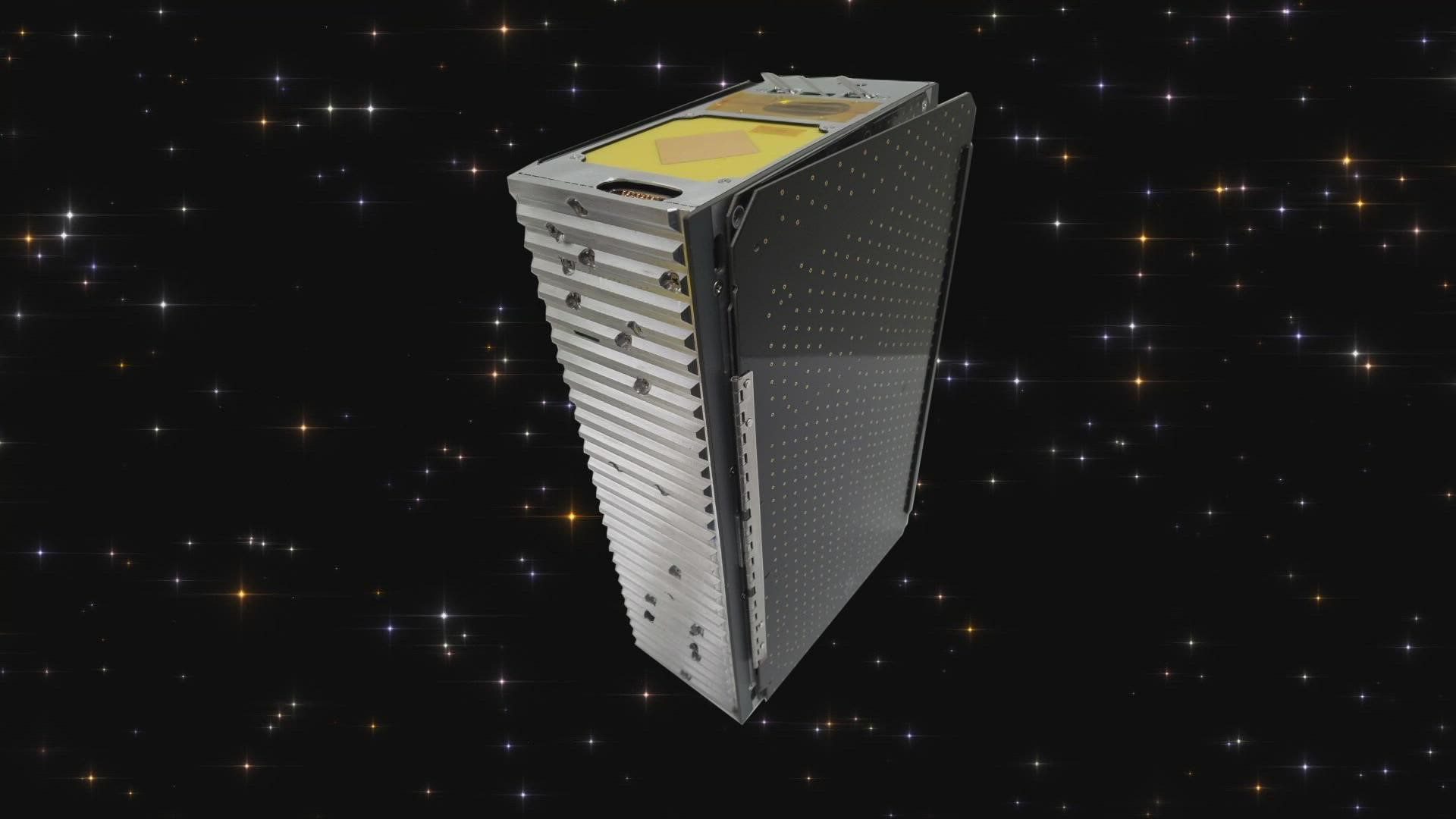CLEVELAND, Ohio — Citizen science is hitching a ride on Artemis 1.
As NASA's mega-moon rocket leaves earth, 10 shoebox size experiments will go with it, comparatively tiny technology with the vast potential to redefine science in space. Team Miles, a volunteer group led by Wes Faley, hopes to show that everyday civilians have the right stuff.
"We ourselves had the wacky idea for a plasma thruster — a new kind of rocket motor for a satellite," Faley explained. "This is one plasma thruster, and there are 12 of these on the spacecraft, and the business end is these couple little holes here.
"A little pink jet comes out of those and pushes the thing along, and we put 12 of them on the spacecraft. And when you spread them along the length of the craft and give them a little tilt, you can light up pairs of them and you can turn the craft."
That craft is about the size of two loaves of bread, and packed with technology.
"The parts [are] just concentrated like a bullion cube of science condensed in there," Faley told us. "It's going to run actually some high school and college stem experiments on deep space weather. There's a group of students that contributed to a little gizmo, so we invented special software for a communication at extreme range. We're going to be 8 to 10 million kilometers from Earth, so way past the moon."
If the experiments are a success, Wes and his team could be in line for prize money, and some hard-earned recognition.
"Our biggest challenge is getting the experts who think they know everything to acknowledge and accept something that's literally world changing in terms of this small, little world of electric thrust." he said.
Big dreams in a little, shoebox-sized package.
"I've yet to really embrace that looking up at the sky, and to think one of those stars could be ours."
Other cubesats will be exploring the lunar surface, flying by an asteroid, measuring radiation, and of course taking pictures.
More Artemis 1 coverage:
- How to watch the second Artemis 1 rocket launch attempt on Saturday: Everything to know about the historic NASA mission
- NASA reschedules launch of Artemis I moon rocket for Saturday
- Artemis 101: Inside NASA's return trek to the moon
- Family of Artemis 1 NASA engineer from Strongsville hoping for launch later this week

